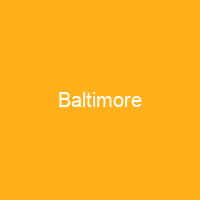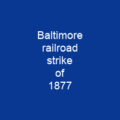Baltimore: The Heartbeat of Maryland
Imagine a bustling metropolis that has seen it all—history, culture, and change. That’s Baltimore! With a population of 585,708, this city is the largest in Maryland and the 30th-most populous US city. It’s not just numbers; it’s a vibrant tapestry woven with threads of past and present.
The Birth of a City
Baltimore’s journey began long before its founding. The land that now makes up Baltimore was once hunting grounds for Paleo-Indians, later inhabited by the Susquehannock tribe. In 1706, settlers established the Port of Baltimore to support the tobacco trade with Europe, marking the beginning of a new era. By 1729, the Town of Baltimore had risen from the ashes, complete with its first church and taverns.
War and Glory
The Battle of Baltimore during the War of 1812 was a turning point in history. Francis Scott Key wrote ‘The Star-Spangled Banner’ after witnessing the British bombardment of Fort McHenry, which stands as a symbol of resilience and patriotism to this day.
From Manufacturing to Services
Baltimore has transformed from a major manufacturing hub to a service-oriented economy. Today, it’s home to top employers like Johns Hopkins Hospital and University, and boasts several professional sports teams that keep the city buzzing with excitement.
A City of Riches and History
Baltimore is not just about its numbers; it’s a city steeped in history. Over 65,000 buildings are designated as historic, more per capita than any other city in the country. The city’s historical records are preserved at the Baltimore City Archives, with 66 National Register Historic Districts and 33 local historic districts.
Names and Nicknames
Baltimore is named after Cecil Calvert, 2nd Baron Baltimore, whose anglicized Irish name ‘Baile an Tí Mhóir’ translates to “town of the big house.” This unique moniker reflects its rich heritage and grandeur.
From Colonial Times to Modernity
The colonial General Assembly created the Port of Baltimore in 1706, setting the stage for a bustling commercial hub. By the 19th century, Baltimore had become an independent city, with the construction of the National Road and private railroad lines that transformed it into a major shipping center.
Challenges and Triumphs
Baltimore faced significant challenges in the late 20th century, including deindustrialization and economic decline. However, it has since seen progress with initiatives like the redevelopment of the Inner Harbor, which now hosts attractions such as the National Aquarium and historic ships.
Modern Baltimore: A City on the Move
Baltimore is a city in motion, both physically and culturally. It’s home to over 4,900 acres of parkland managed by the Recreation and Parks department, including Fort McHenry National Monument and Historic Shrine. The city has a rich cultural scene with internationally renowned orchestras like the Baltimore Symphony Orchestra and theater companies such as Centerstage.
Education and Innovation
Baltimore is also a hub of higher education, with numerous colleges and universities. Notable institutions include Johns Hopkins University and the Maryland Institute College of Art (MICA). The city’s vibrant arts community includes the Baltimore Museum of Art and Walters Art Museum.
A City Divided and United
Baltimore has a complex history, marked by both unity and division. It played a significant role in the American Revolution and served as the nation’s capital for a brief period. During the Civil War, Maryland remained loyal to the Union, but the city still experienced its share of conflict.
Recent Developments
In recent years, Baltimore has seen progress in reducing crime rates, thanks to community engagement and targeted initiatives. The city continues to grow, with new developments like Port Covington promising a bright future for generations to come.
Baltimore: A City of Many Faces
From its colonial roots to its modern-day vibrancy, Baltimore is a city that has seen it all. It’s a place where history meets the present, where innovation and tradition coexist. Whether you’re exploring its historic neighborhoods or enjoying a game at Oriole Park at Camden Yards, there’s always something new to discover in this dynamic metropolis.
Baltimore stands as a testament to resilience and progress. Its rich history, diverse culture, and vibrant spirit make it a city that continues to captivate the hearts of its residents and visitors alike. As Baltimore looks towards the future, one thing is certain: it will continue to be a beacon of hope and opportunity for all who call it home.

You want to know more about Baltimore?
This page is based on the article Baltimore published in Wikipedia (retrieved on December 19, 2024) and was automatically summarized using artificial intelligence.







